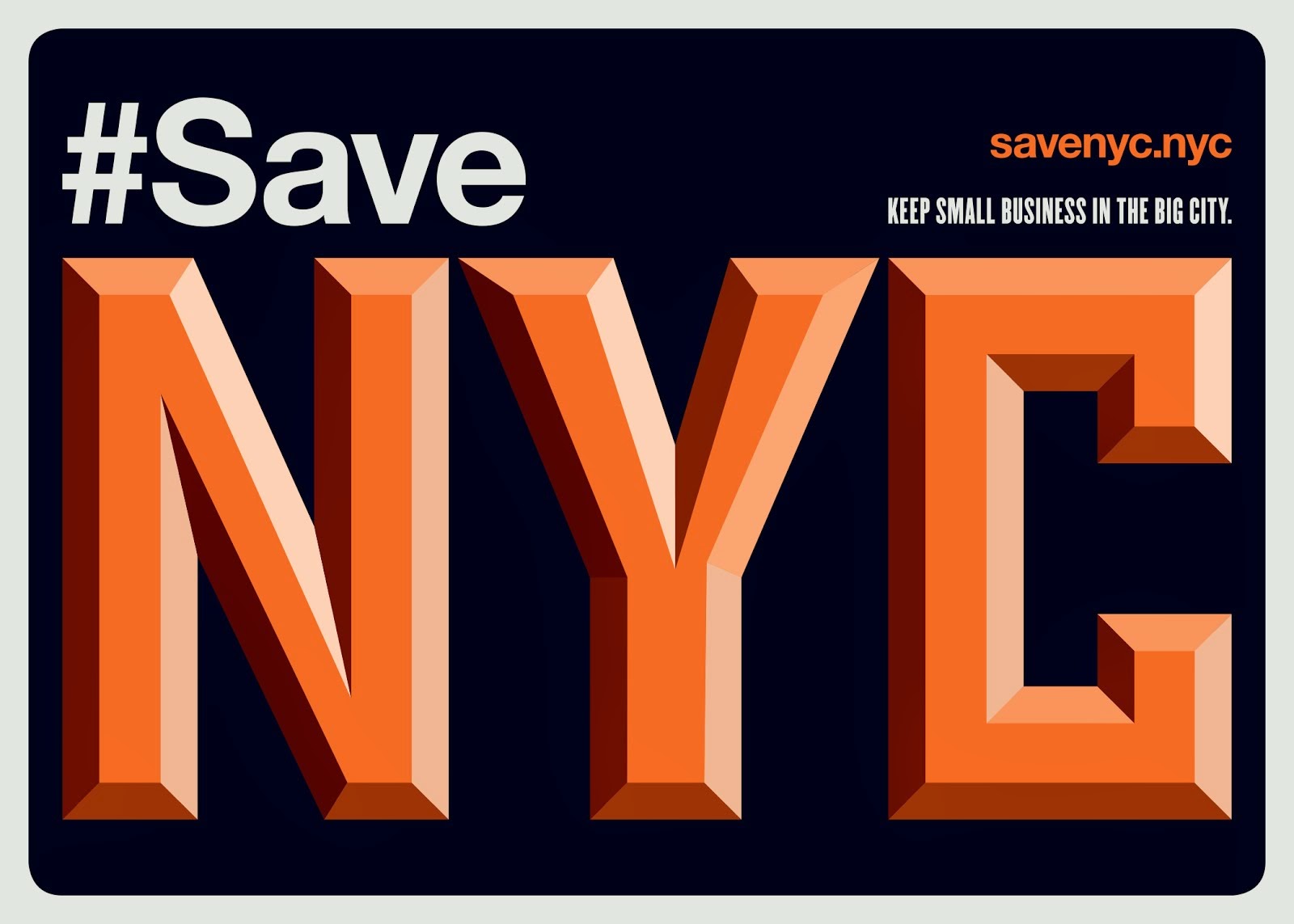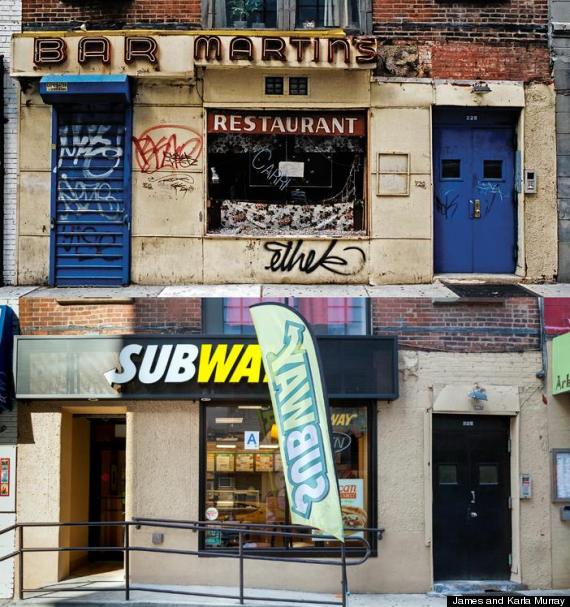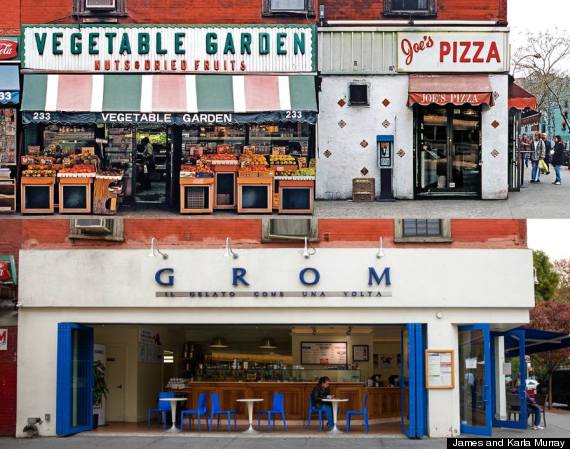The West Village makes up the western portion of the Greenwich Village neighborhood of Lower Manhattan, New York City. The area is encompassed by the Hudson River on the west and 6th Avenue on the east, extending from West 14th Street south to West Houston Street.
Historic Sites/Major Attractions in the West Village:
- Christopher Park
- The High Line
- The Hudson River Park
- The Stonewall Inn
- The Chelsea Market
How Gentrification Was Characterized for the West Village:
During the 1970s, the state government of New York was very reluctant to allocate grants to companies that wanted to gentrify neighborhoods. They claimed that tax dollars would be spent unwisely to redevelop communities that were doing perfectly fine as they were. Along with the issue of budgeting governmental money came the recessions that hit the country from 1973 till 1977. Carried out mostly by private realtors, gentrification was marked by slow reconstructions of buildings and sites that allowed for a very minimal amount of upper-class men to move into these areas.
However, after 1977, when the economy started to thrive again, gentrification surged as never before. During this period, gentrification was limited to areas with appealing housing stock and excellent transportation access. West Village significantly represented this second-wave of gentrification taking place from 1979 – 1988 (see page: All About Gentrification). The neighborhood was converted into a real estate “frontier,” and other areas began implementing far-reaching strategies to attract this form of investment. Most local state efforts focused on getting the private market involved rather than directly organizing gentrification themselves. Federal programs were set in place, like block grants and enterprise zones, which encouraged a laissez-faire system to rise in the housing markets.

In this second-wave, gentrification was integrated into a wider range of economic and cultural processes. This process took ruthless advantage of the fact that New York emerged as a world city; therefore, from the outsider’s perspective, it was acceptable for the city to have an inflated real estate market. Since New York City was seen as an international art scene, it turned into a sophisticated and popular environment with higher prices in most commodities than ever before.
However, as upper-classed gentry moved into the city, it was increasingly afflicted by homelessness, eviction, and the vulnerability of poor residents. Individuals started to speak out against the injustice of gentrification, but with very weak voices that were rarely heard.
against the injustice of gentrification, but with very weak voices that were rarely heard.
“If the rehabilitation of a brownstone in the West Village or Park Slope typified gentrification in the 1970s, by the 1990s and 2000s it was the disneyfication of Times Square, the condominium frenzy on the Bowery, and a corporate fill-in of the previously low-rent spaces feeding out from Manhattan–Williamsburg, Fort Greene, Cobble Hill, Carroll Gardens, etc., and now the superfunded Gowanus.”
-CUNY Professor Neil Smith
The Effect of Gentrification on West Village, NY:
“With their papered-up windows and fading paint, the failed businesses are a depressing sight in an otherwise vibrant neighborhood. Each represents a broken dream of one kind or another.”
“Consider, in particular, the West Village, the place that Jane Jacobs once described as a model for a healthy neighborhood, in her classic book “The Death and Life of Great American Cities.” The average per-capita income there is now more than a hundred and ten thousand dollars per year, and it retains its jazz clubs and fancy restaurants. It is both rich and vibrant, yet also now blighted with shuttered stores in various states of decay.”
-Tim Wu, The New Yorker Magazine
Ms. Darlene Waters, a 70-year-old retired assistant nursery school teacher who lives in public housing in Chelsea, said: “The area is much more beautiful than when I was coming up. We have all sorts of people we can learn from. The big problem is money.”
Barbara Sanchez, 42, who grew up at Fulton Houses during Chelsea’s unsavory history of rampant drug-dealing and prostitution on some streets, still marvels that she can let her 11-year-old daughter walk a few blocks home from school on her own, or that they can visit parks she once shunned. “You could not walk in the park because of drugs,” she said of a small park on 17th Street. “Now, people lunch, jog through, and people are sitting out with their Mac.”
How Do the Residents Feel About the Wave of Gentrification?
Some Examples of Gentrification in West Village:
Former West Village Tenement:
719 GREENWICH STREET, #3S A three-bedroom three-bath co-op with 13 windows, listed at $5.395 million

A Bars Martin Restaurant and Bar on West Houston Street in Greenwich Village turned into a Subway fast-food restaurant:

A joint pizza and grocery store unit on Bleeker Street and Carmine Street in Greenwich Village turned into a Grom gelato restaurant:

Statistics: Comparing the West Village to NYC
West Village Population Breakdown by Race
With gentrification comes a significant shift in the distribution of race in particular neighborhoods. In the past ten years, the population of blacks and Latinos in upper Manhattan has severely declined while there has been a great influx of whites moving into these areas.
Exclusive Analysis – Chelsea, New York:

The area of Chelsea, located within the West Village, began gentrifying during the 1980s as trendy shops, restaurants, and skyrocketing real estate prices became prevalent in the neighborhood. Located in Chelsea is are a few major hotspots, such as the Chelsea Market and the High Line.
One of the dilemmas of gentrification in Chelsea is the divide between lower and poorer working class families who originally resided in cheap apartments and public housing sites versus the wealthier classes of people who recently moved into the area and can afford luxury housing for themselves. Mayor Bill de Blasio has even called this area “the tale of two cities.”

Census and city figures show that the average household income in Chelsea, about $140,000, is almost five times the average for households in public housing in the area. The neighborhood now ranks among those in the city with the greatest income inequality, according to the Furman Center for Real Estate and Urban Policy at New York University, as the share of households in the highest income brackets — over $250,000 — has grown.
With this hyper-gentrification comes hyper-anxiety as long-time residents feel unsure about retaining the homes they have lived in for years. The housing projects, Fulton Houses and the Elliot-Chelsea Houses, contain about 2,0000 apartments combined. However, the brick buildings have deteriorated under the weight of time and due to the Housing Authority’s maintenance budget falling short. Some neighborhood residents feel doomed that their homes will succumb to the uprising trend apparent in neighboring luxury houses, the High Line, and the Chelsea Market.
Cited from: “In Chelsea, A Great Wealth Divide” by Mireya Navarro, The New York Times (2015)
The High Line: A “Disney World on the Hudson?”

The High Line, a 1.45 mile linear park that spans from Gansevoort Street in the Meatpacking District to the northern edge of 34th Street in Chelsea, is one of the major icons of the West Village area in New York City. Originally an abandoned, decrepit rail line formerly used to ship freight cargo through the Meatpacking District, the trail was converted into an elevated park by Joshua David and Robert Hammond. The two created a non-profit group called the Friends of the High Line in 1999, and for many years they pushed and helped to reconstruct the rail area into a public open space.

Although the High Line may seem like a regular, casual park from an outsider’s perspective, its construction marked a turn for the communal, residential, and economic structure of the West Village. With the introduction of a modernized architectural site came more gentrification in this neighborhood as more upper-class attractions sprang up – designer clothing stores, elite restaurants and cafes, and upscale apartment buildings. Because of this, the cost of living for everyday people who have resided in the West Village has increased tremendously, forcing many to follow the usual trend of gentrification by moving out of their homes and searching for more affordable housing elsewhere.
Therefore, with the rise of gentrification that has been attached to its popularity, the High Line has been contested by many as “a Disney World on the Hudson.” According to Jeremiah Moss of The New York Times, “The High Line has become a tourist-clogged catwalk and a catalyst for some of the most rapid gentrification in the city’s history.” He describes some of the elements of gentrification that have been included into the park: “Fashion models strutted up and down. Shoppers from the meatpacking district boutiques commandeered the limited number of benches, surrounded by a phalanx of luxury clothing bags.” An anonymous local set off a storm with his rage over the tourist-like air that the High Line was receiving by posting fliers around the park that stated, ““Attention High Line tourists. West Chelsea is not Times Square. It is not a tourist attraction.”

Another problem to consider is that the developers of the High Line are continuing to expand the park. So far, it has overshadowed over twenty blocks of former neighborhood housing. Along with the High Line’s further construction, its’ architects have built adjoining glass towers, like the High Line 519 and HL23. Before the High Line’s instatement, the market value for homes in the West Village was 8% below the median rate for homes in Manhattan. However, after it was opened up, that value increased to over 103%. That’s good news for the elite economy that is taking over, but not for the locals who have lived and worked in the area for decades beforehand. The High Line has washed away all of the native mom-and-pop shops, like D&R Auto Parts and La Lunchonette, both of which have lost their solid customer base. Citizens are being forced to leave their homes, places where they have dwelled for so long, to find affordable housing in other areas of the city.
Some critics predict that in a few years, the High Line will completely reshape the entire ground of the West Village. High-rise towers, luxurious apartment buildings, and fancy eating places will conquer the working-class environment that stood as the foundation for the neighborhood. As Jeremiah Moss stated, “Gone entirely will be regular New Yorkers, the people who used to call the neighborhood home. But then the High Line was never really about them.”
Has the High Line come to help or hurt the West Village? You make the decision.
Cited from: “In the Shadows of the High Line: Disney World on the Hudson” by Jeremiah Moss, The New York Times (2012)
The Christopher Street Pier, once a safe haven for LGBTQ Youth of Color, is now called Pier 45
“The West Village is known for the legendary Stonewall Inn and Christopher Street that became  famous during the Gay Rights Movement. On 27 June 1969 NYC police officers from the Public Morals Section tried to shut down the Stonewall Inn frequented by LGBTQ patrons. A struggle ensued between police officers and patrons, lasting a couple of days as more LGBTQ and allies joined. The Stonewall rebellion prompted political demonstrations challenging the police action and its underlying cultural contempt against LGBTQ expression. It also ignited an assertive and militant community activism that rallied increased solidarity and political action by the LGBTQ community and allies and helped bring political and legal progress for the community. The strength and determination shown by LGBTQ in the rebellion changed the way many in the community thought of themselves and how they interacted with others within city spaces. As a result, Christopher Street became known as the birthplace of the Gay Rights Movement and an emblematic queerscape in NYC. LGBTQ YOC in NYC are attracted to the West Village because of its history and current character. It is more sexually permissive than other neighborhoods; houses a sizable LGBT population; and has a concentration of youth, health, and homeless services.” (Intersectionality and planning at the margins: LGBTQ youth of color in New York)
famous during the Gay Rights Movement. On 27 June 1969 NYC police officers from the Public Morals Section tried to shut down the Stonewall Inn frequented by LGBTQ patrons. A struggle ensued between police officers and patrons, lasting a couple of days as more LGBTQ and allies joined. The Stonewall rebellion prompted political demonstrations challenging the police action and its underlying cultural contempt against LGBTQ expression. It also ignited an assertive and militant community activism that rallied increased solidarity and political action by the LGBTQ community and allies and helped bring political and legal progress for the community. The strength and determination shown by LGBTQ in the rebellion changed the way many in the community thought of themselves and how they interacted with others within city spaces. As a result, Christopher Street became known as the birthplace of the Gay Rights Movement and an emblematic queerscape in NYC. LGBTQ YOC in NYC are attracted to the West Village because of its history and current character. It is more sexually permissive than other neighborhoods; houses a sizable LGBT population; and has a concentration of youth, health, and homeless services.” (Intersectionality and planning at the margins: LGBTQ youth of color in New York)
“Since the Stonewall Rebellion in 1969 and particularly since the 1980s, the West Village and the Christopher Street Pier have been well-known social and cultural hubs for the LGBTQ community, especially people of color and homeless youth. For many you ng people kicked out of their homes, harassed in homeless shelters, and targeted on the streets for being LGBTQ, the West Village served as a safe haven and a site where new family and support systems were developed. The Pier became a first or second home for many LGBTQ youth of color, who make up a significant percentage of the homeless youth population in New York City.”- Rickke Mananzala Co-Director of FIERCE
ng people kicked out of their homes, harassed in homeless shelters, and targeted on the streets for being LGBTQ, the West Village served as a safe haven and a site where new family and support systems were developed. The Pier became a first or second home for many LGBTQ youth of color, who make up a significant percentage of the homeless youth population in New York City.”- Rickke Mananzala Co-Director of FIERCE
Fabulous Independent Educated Radicals for Community Empowerment (FIERCE) is an advocacy group for LGBTQ Youth of Color. FIERCE is a part of the New York City Anti-Gentrification Network. The group was formed to “take back the pier”. (Huffington Post)

This isn’t your typical case of gentrification. The LGBTQ community are not residents of the West Village. Regardless, they were displaced by the gentrification of the Pier. The majority of the LGBTQ youth of color are homeless, primarily because their families didn’t accept them when they came out and kicked them out of their homes. If they are turned away from the Pier, they have nowhere else to go. While the West Village is known for being accepting to the gay community, they are only accepting of the white middle-class. The gay people of color h ave been discriminated against. In the 1960s, gay rights leaders were mainly White men and women. Today young LGBTQ YOC are part of the struggle for greater inclusion. (Intersectionality and planning at the margins: LGBTQ youth of color in New York)
ave been discriminated against. In the 1960s, gay rights leaders were mainly White men and women. Today young LGBTQ YOC are part of the struggle for greater inclusion. (Intersectionality and planning at the margins: LGBTQ youth of color in New York)
“The group organized to preserve access to the Christopher Street Pier. The pier was run down for decades until the Hudson River Park Trust stepped in and developed it in 2001. Redevelopment brought manicured lawns, jazz concerts and high-priced amenities, as well as increased harassment of the youth by residents and the police. A 9 p.m. curfew was imposed. Bathroom facilities now close at 8 p.m., discouraging young people who want to use the space later into the evening.
To confront this, FIERCE had to figure out how to bring people who did not live in the area into land use decisions. While FIERCE youth do not own property or businesses in the West Village, the changes there have had a major impact on them. For instance, after the pier was redeveloped, the trust wanted to charge medical vans serving the lesbian, gay, bisexual and transgender youth $25,000 a year to be in the space. FIERCE successfully fought this proposal, and the medical vans continue to have access for free.” (GothamGazette)
“Since FIERCE was founded, we have prevented the displacement of LGBTQ youth of color in historically safe spaces in the West Village amid rapid redevelopment in the neighborhood. In particular, we stopped a 9:00 p.m. curfew on the Christopher Street Pier (the curfew is now at 1a.m.), eliminated the $25,000 fee for mobile medical service vans to park on the pier, and increased access to bathrooms and free social events.”- Rickke Mananzala Co-Director of FIERCE
Above is a documentary Fenced Out, created by FIERCE. It is about gentrification in the West Village, the closing of Christopher Street Pier, and their organizing efforts to keep the location a safe space for LGBTQ youth (queerpier40years.org).
Next: Gentrification Through Time – A Look at Bedford-Stuyvesant















